|
|
Authors
|
Date
|
Title and Description
|
|
 |
Carol Brewer, Paul Alaback, Brooke B. McBride, Jen Marangelo, Alison Perkins, and Dave Oberbillig |
March 2008
NSF GK-12 Education Meeting
|
Phenology as an integrating context for ecological inquiry in rural and suburban schoolyards of western Montana (pdf format)
In this last year of our GK-12 grant, ECOS has initiated a yearlong Seasonal Schoolyard Science program to help teachers and their students explore seasonal change, or phenology. By the last month of school, students will use the skills they have developed throughout the year to ask their own questions about “What do I want to know next about the ecology of my schoolyard?”
|

|
Mary Bricker |
August 2007
Ecological Society of America
|
Plants on the move-testing wind-dispersed
seeds in the classroom (pdf format)
This article describes an
investigation designed to help students appreciate the relationships between the form and function of plant structures, and lets them experimentally test a plant adaptation. In this lesson the students examine and
compare different types of seeds and investigate which seeds travel farthest on the wind in a simple classroom
experiment. This lesson has been used successfully with both fifth and sixth grade students.
|
|
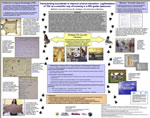
|
Matthew Corsi and Florence M. Gardipee |
August 2007
Ecological Society of America
|
Transcending boundaries to improve science education: Legitimizationtion of TEK as a scientific way of knowing in a fifth grade classroom. (pdf format)
Traditional ecological knowledge can be used in the classroom as an avenue to demonstrate how science can be personally and socially relevant to students. Through the University of Montana GK-12 ECOS program, we developed two student-driven ecological research projects appropriate for upper elementary school students and implemented for fifth-graders on the Flathead Indian Reservation, Montana.
|
|

|
Carol Brewer, Paul Alaback, Sarah Bisbing, Mary Bricker, Matt Corsi, Flo Gardipee, Nathan Gordon, Mike Machura, Johnny MacLean, Jen Marangelo, Brooke McBride, Joss McKinnon, Alison Perkins, Jeff Piotrowski, and Rebecca Wahl |
August 2007
Ecological Society of America
|
Transforming the graduate school experience through the Montana GK-12 “Ecologists in residence” program (pdf format)
To meet the need for enhanced understanding of environmental sciences in the Northern Rockies, the Ecologists, Educators and Schools (ECOS) Program promotes teaching practices focused on “learning by doing” and inquiry instruction for both teachers and University of Montana graduate student fellows. Through their participation in ECOS fellows transform the way teachers and their students look at schoolyards, changing the perception from playground to ecological laboratory. At the same time, the fellows experience transformations as well.
|
|

|
Florence M. Gardipee |
August 2007
Ecological Society of America
|
The traditional Native American “Winter Count Winter Count” as a model for as a model for teaching ecological observation and inquiry. (pdf format)
The integration of Traditional Ecological Knowledge (TEK) into GK-12 science programs can allow us to bridge the gap between ecology, natural history, the scientific method, and indigenous cultures. It can provide a creative approach to meeting National Science Standards, while offering relevancy to other topics such as social studies. The “Winter Count” is a Native American tradition of recording major ecological events and other observations as symbolic images on animal hides.
|
|

|
Alison Perkins and Carol Brewer |
August 2007
Ecological Society of America
|
Helping students explore the world of insect pollinators: "The Eyes Have it". (pdf format)
Although insects and plants are major units in the elementary school curriculum, not all teachers have the tools to investigate this important ecosystem service, particularly at the lower elementary level. School reform efforts recommend incorporating inquiry to emphasize using knowledge, ideas, and processes. Constructivist theory suggests that free-choice education opportunities also may be important in science concept formation, especially when families provide encouragement. Therefore, we developed an inquiry and take-home story to engage families in their children's science learning. The inquiry, "What in the world do insects see?", was designed for 1st and 2nd grade students as an exploration of how insects see their world.
|
|

|
Rebecca Wahl |
August 2007
Ecological Society of America
|
Enhancing ecology education through
international connections (pdf format)
International exchanges can help elementary school students understand concepts of biogeography, biodiversity, and natural history while enlarging their worldview. Through an eco-pen pal project, third grade students from Missoula, Montana, USA corresponded with fiveto eleven-year old students at two rural schools in northern Scotland about specific ecological inquiries that were simultaneously implemented.
|
|

|
Carl Rosier, Melodee Burreson, Jann Clouse, Carol Brewer, and Matthias C. Rillig |
May 2007
Soil Ecology Society
|
Investigations into the Microbial World: Introducing Middle School Students to Concepts in Microbial Ecology. A GK-12 Experience. (pdf format)
The purpose of this project was to develop three investigations (Figure: 1), that will aid middle school students (6th-9th) in gaining a greater understanding of the positive aspects of microorganisms. These inquires are designed as easy to do investigations with limited expense and address the National Science Education Standards.
|
|

|
2005-2006 ECOS Fellows and Directors
|
March 2007
NSF GK-12 Education Meeting
|
No Child Left Indoors! Partnerships Between Montana Ecologists, Educators and Schools (pdf format)
To build partnerships
for enhancing science education we have focused on 1) translating ecological research for K-12 audiences; 2) matching
teacher and fellow expectations to promote successful collaborations in the partner schools; and 3) building infrastructure
and learning laboratories for teaching ecology in local schoolyards and open areas,
|
|
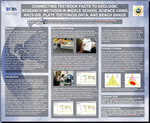
|
John MacLean
Mike Plautz
|
October 2006
Geological Society of America
|
Connecting Textbook Facts to Geologic Research Methods in Middle School Science Using ARC9 GIS, Plate Tectonics Data, and Beach Sands (pdf format)
In an effort to introduce middle school students to geologic research methods concerning Earth's history, we developed an inquiry that combines current computer technology, hands-on laboratory experience, and constructivist education concepts.
|
|

|
2005-2006 ECOS Fellows and Directors
|
August 2006
Ecological Society of America
|
Sustaining the Impact of Scientist Educator Partnerships: Montana ECOS (pdf format)
An explanation of how ECOS has made itself sustainable in the community, primarily through ecological demonstration projects and web resources.
|
|

|
Brooke McBride
|
August 2006
Ecological Society of America
|
Using Cartoon Illustrations to Explain Complex Processes in Ecology (pdf format)
Explaining the importance of carbon in soils using cartoons.
|
|

|
Paul Alaback, Josh Burnham, Carol Brewer
|
August 2006
Ecological Society of America
|
An Interactive Natural History Database to Support a GK-12 Program (pdf format)
A summary of the vision, goals and methods of creating an online natural history guide. This poster has been presented at NSF's GK-12 education meeting and also during the ECOS institutes.
|
|
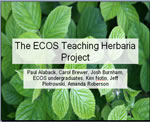
|
Jeff Piotrowski
|
August 2006
Ecological Society of America
|
Teaching Herbaria in GK12 Education (pdf format)
Jeff Piotrowski's special project of creating a traveling herbaria accompanied by curricula.
|
|

|
Mike Machura, Brooke McBride, Alison Greene, Carol Brewer
|
August 2006
Ecological Society of America
|
Ecologists and Students Explore Plant Diversity in the Schoolyard: a Fourth Grade Introduction to Experimental Design (pdf format)
Rediscovering the Outdoor Discovery Core
This is a comprehensive plant guide including information and images of all the plants in the Lewis and Clark Outdoor Discovery Core.
|
|
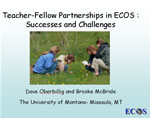
|
Brooke McBride, Dave Oberbillig
|
April 2006
National Science Foundation GK12 Conference
|
Teacher-Fellow Partnerships in ECOS: Success and Challenges (pdf format)
Rediscovering the Outdoor Discovery Core
This is a comprehensive plant guide including information and images of all the plants in the Lewis and Clark Outdoor Discovery Core.
|
|

|
2005-2006 ECOS Fellows and Directors
|
March 2006
National Science Foundation GK12 Conference
|
Ecologists, Educators and Schools. The University of Montana GK-12 Program (pdf format)
Summary of the roles of ECOS fellows.
|
|

|
Brooke McBride, Dave Oberbillig
|
March 2006
Montana Environmental Education Association
|
No Child Left Indoors! Connecting Scientists with Educators (pdf format)
A summary of the ECOS program and demonstration of three ecological inquiries.
|
|
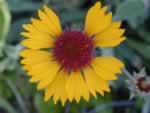
|
Julie Greil, Carol Reeves,
Corissa Crowder,
Katie Hailer,
Bruce Threlkeld
|
August 2006
|
Lewis and Clark School Plant Guide (pdf format)
Rediscovering the Outdoor Discovery Core
This is a comprehensive plant guide including information and images of all the plants in the Lewis and Clark Outdoor Discovery Core.
|
|
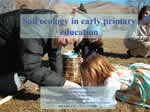
|
Jeff Piotrowski
|
November 2005
Soil Science Society of America Annual Conference
|
Soil ecology in early primary education (pdf format)
A series of soil inquiries to integrate into a science unit.
|
|
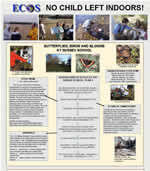
|
ECOS Directors
|
March 2005
National Science Foundation GK12 Conference
|
NSF GK-12 Directors Meeting Poster (pdf format)
A summary of the ECOS program, roles of fellows, and ecological demonstration projects.
|
|

|
Jennifer Woolfe, Andrew Whitely, Carol Brewer
|
2005
Society for Conservation Biology
|
To
Burn or not to Burn: What is the Question? (pdf format)
As a demonstration project at a Big Sky High School, an experimental
burn was conducted. The project successfully taught students
about the scientific process and ecology by having them participate
in a field experiment.
|
|


 Funded by the National Science Foundation
Funded by the National Science Foundation